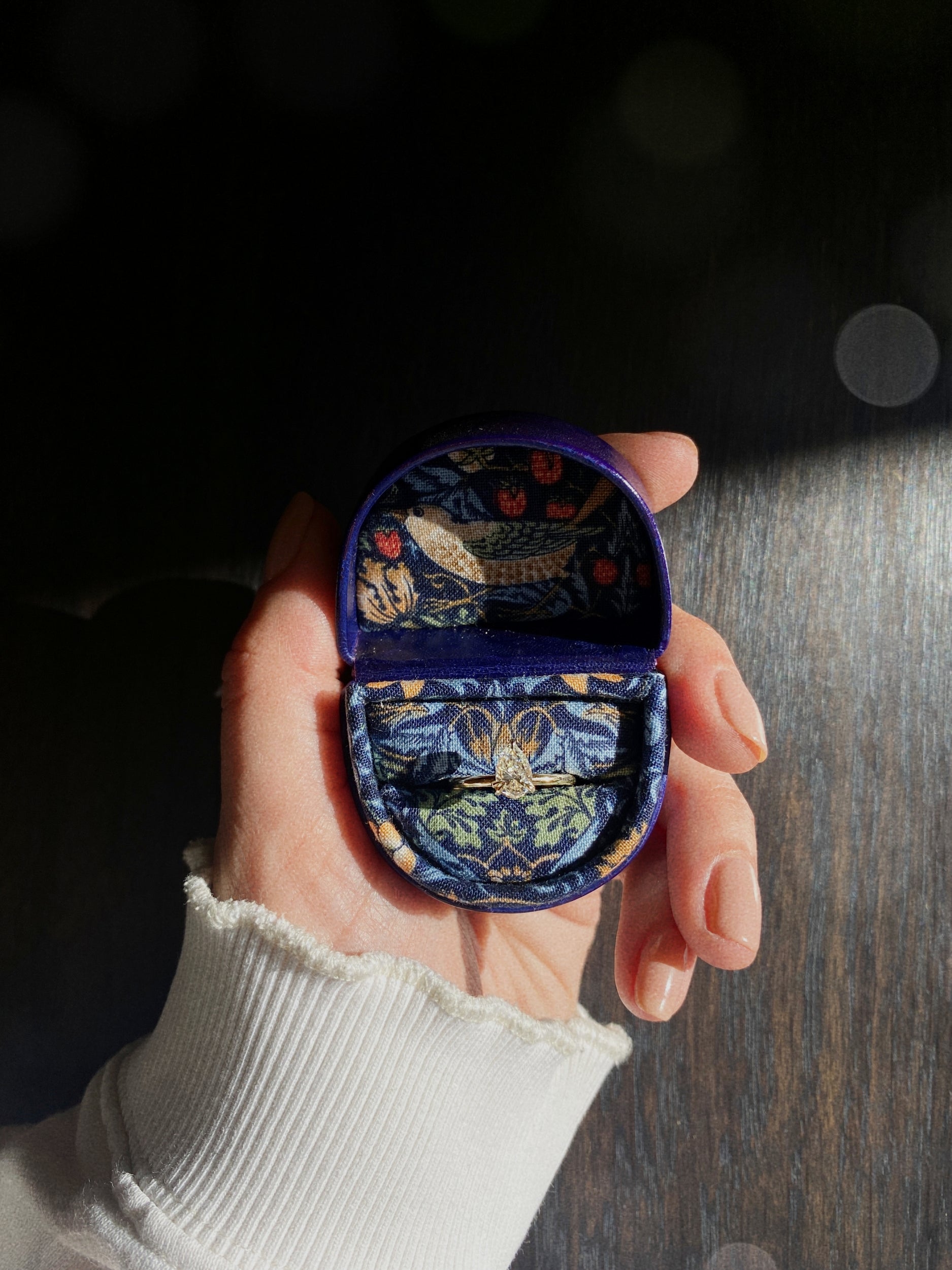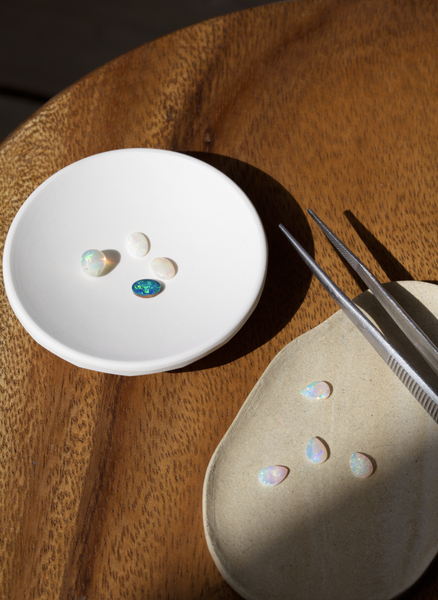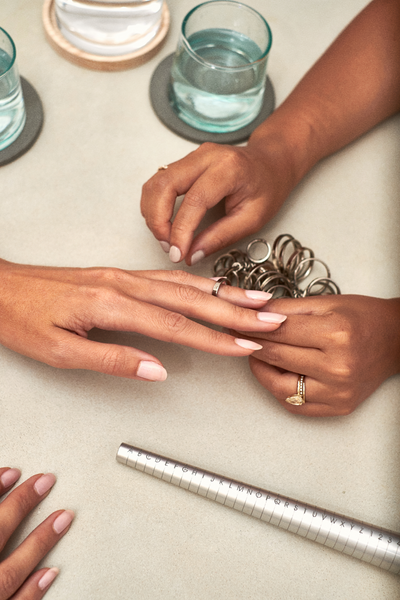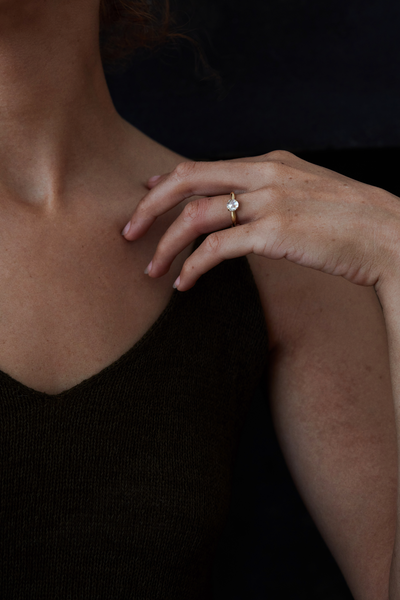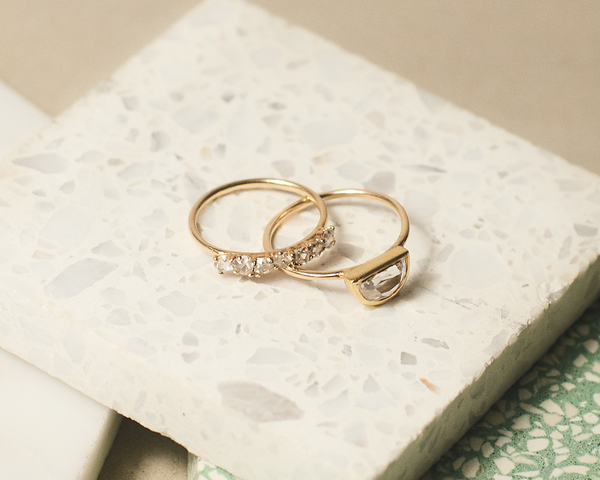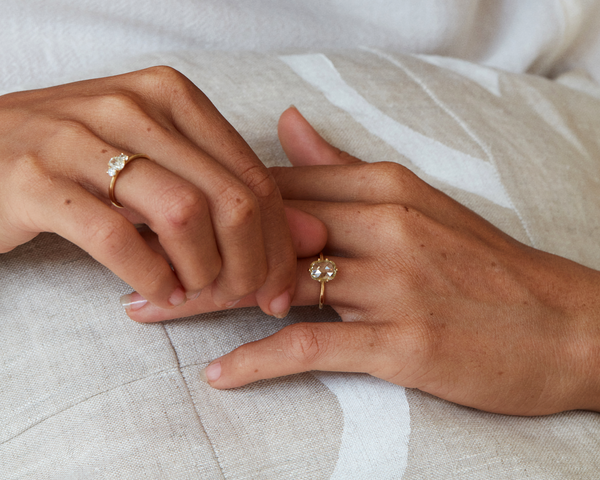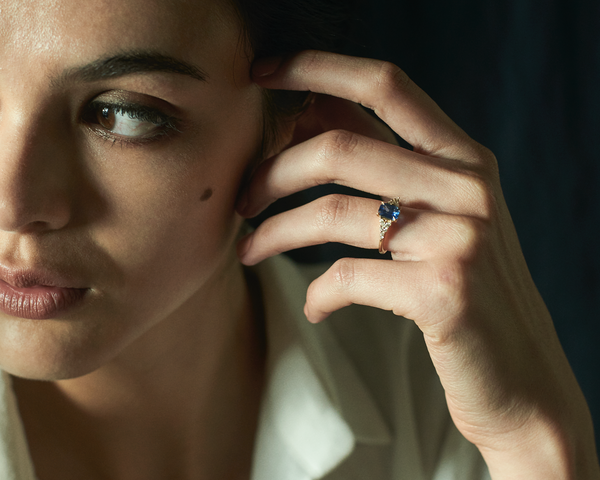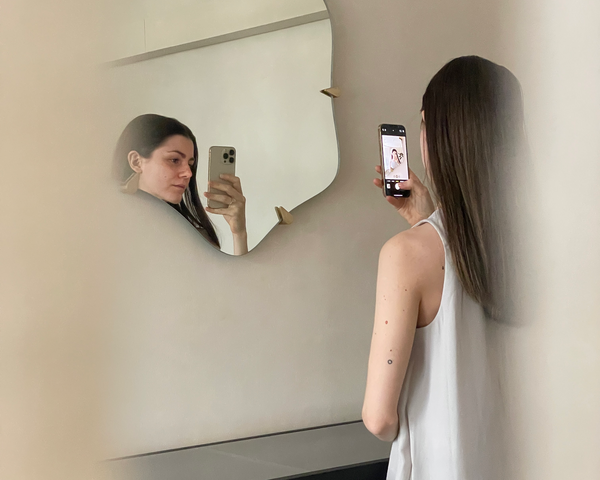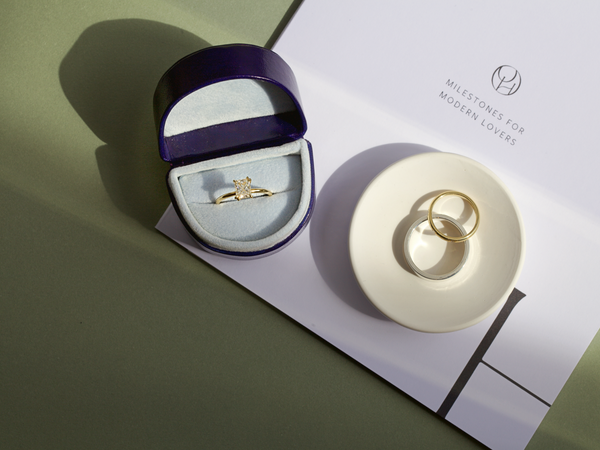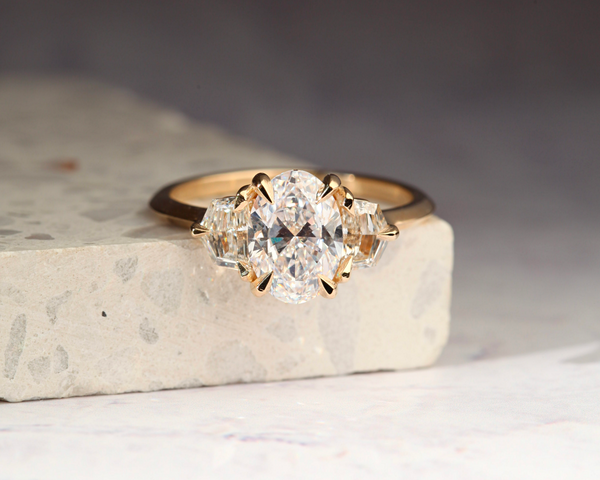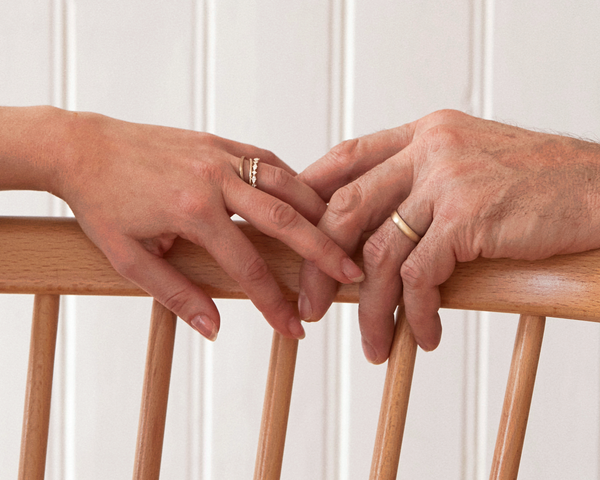Care & Maintenance
Thank you for choosing Michelle Oh jewellery. Please read this information carefully before placing an order so you are better prepared for caring and maintaining your jewellery post purchase.
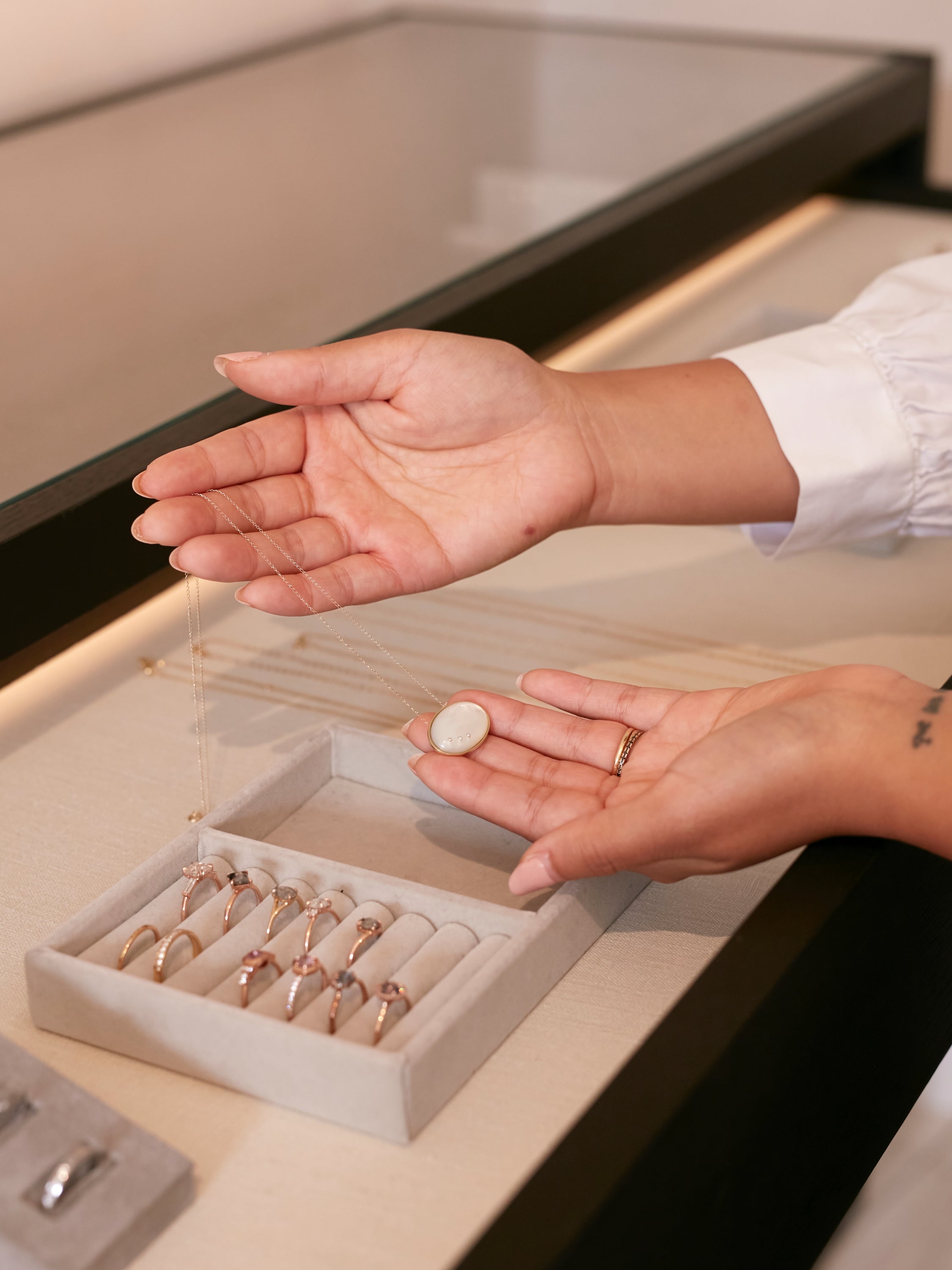
A few golden rules:
- Diamonds are hard, but not indestructible.
- Laws of physics still apply: delicate rings will require more delicate handling than chunky ones.
- Soaps, sanitisers and lotions are bad for your stones and settings.
- Jewellery won’t maintain itself, you need to look after it to keep it looking its best
A lot of people mistakenly believe that jewellery maintains itself - this is simply not true.
All treasured possessions, especially those which we use often, will eventually show signs of wear and tear. How we choose to treat them will affect their appearance over time.
We recommend taking all jewellery off before sleeping, washing, swimming, exercising, household chores, nursing, handling pets, playing with children, etc.
It is best to remove all jewellery before any other activities which may potentially put the jewellery under unnecessary stress or strain, in order to avoid damage.
Is the style right for you?
Different styles of jewellery (ie. different styles of setting, stones, etc) require different levels of mindfulness and maintenance. If you are commissioning a new bespoke piece, please be honest with yourself and us about your own living and working habits so that we can design the best piece of jewellery that not only looks good but will also fit in with your lifestyle.
If you are considering one of our existing designs for an engagement or wedding ring, please consider the practicalities of how the design will fit into your day to day life before buying. If in doubt, ask us what we think and we'll give you an honest answer. Don't buy a ring just for its looks! It needs to do better than look pretty if it is to last a lifetime.
If you have already received your jewellery, we hope these notes will help you enjoy your jewellery for years to come. We lovingly hand craft each piece and genuinely care for every single piece we put out, so we hope that upon delivery they will be cherished as much if not more!
Be mindful of the design of your chosen jewellery when you are wearing them. If the piece is heavily textured, or has edges which may scratch, it would be in your best interest to remove the jewellery before coming into contact with pets or children. Prong settings and the edge of diamonds can also scratch surfaces so please exercise caution when wearing your jewellery.
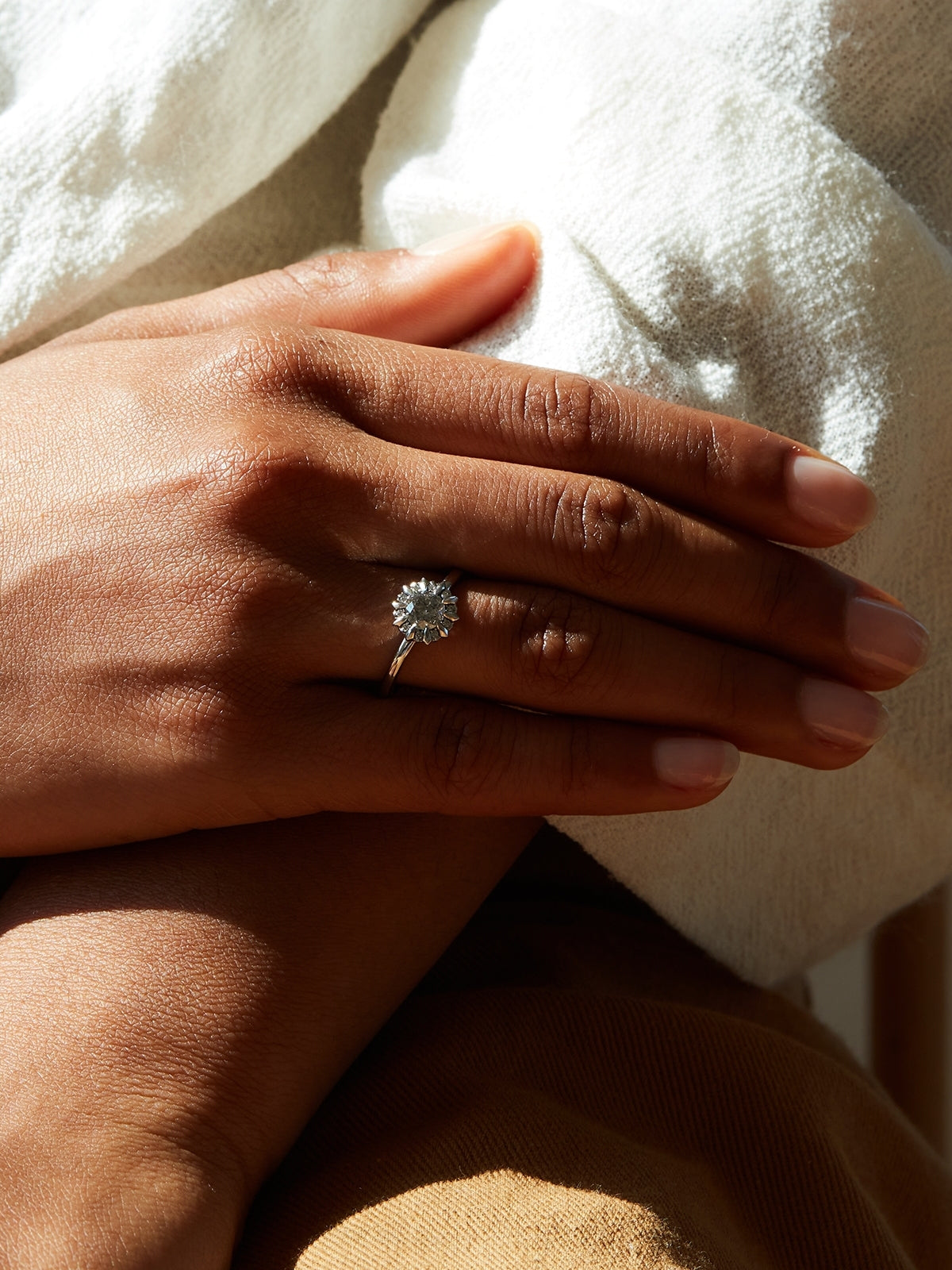
Everyday Wear and Tear
By nature all jewellery may from time to time catch on clothes, and other surfaces. To minimise or avoid snagging and potentially damaging both the jewellery or your textiles, we recommend taking off your jewellery before undressing or putting your jewellery on last when getting dressed.
If your jewellery contains claw / prong set stones, or many little stones set in a cluster or pave setting, these settings may be more prone to snagging as by nature they protrude from the surface of your jewellery.
Constant snagging may pull and distort the settings which hold your stones and they will be more likely to fall out of the jewellery as a result. This can happen over time, or after just one instance. Because of this, we strongly discourage pulling at the jewellery if it catches or snags on something. If you have dislodged the stones in your jewellery by accident, do not worry, accidents happen and we are ready to help any way we can. Get in touch and depending on what needs doing, we will be happy to help repair the jewellery for a small fee.
When snagging occurs, gently remove the jewellery and slowly untangle the piece away from the other material to avoid damaging both your jewellery and whatever it has caught itself on.
Avoid your jewellery coming into contact with harsh chemicals, which can sometimes hide in beauty and household products including but not limited to soaps, detergents, sanitisers, perfumes, and lotions. Contact with such chemicals can sometimes cause discolouration in the metal. Do not be alarmed if this happens as a simple re-polish can usually remove the discolouration but harsher things like the high alcohol content in sanitisers can erode delicate prongs and some stones over prolonged use.
At the end of the day, when it comes to how you use and wear your jewellery, a little mindfulness and care goes a long way! We do not accept responsibility for any damage resulting from improper unrecommended use of our jewellery. Please take reasonable care and judgment when using our jewellery to avoid any unwanted accidents to your self and others.
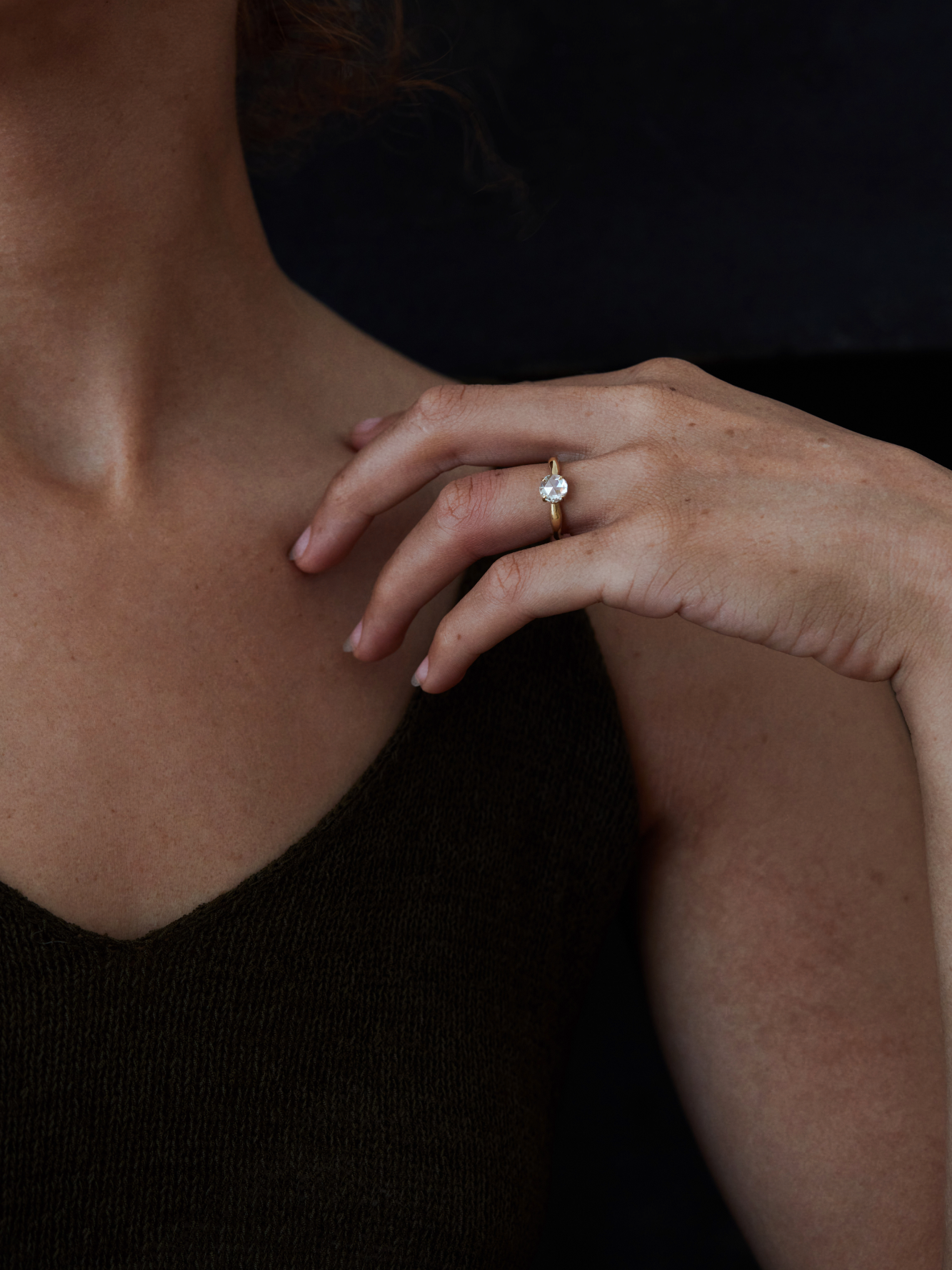
Pearl / Opal Jewellery
If your jewellery contains pearls or opals, as some of our designs do, you must take special care when wearing, storing and caring for your jewellery in order to maintain its condition. In addition to the general jewellery care notes provided above, please find more care guides below specifically for pearl and opal jewellery.
Did you know that natural pearls and opals are soft and porous? They can even disintegrate if they come into contact with harsh acidic substances, including but not limited to bleach and vinegar. Please take extra care when wearing your pearl jewellery to ensure that they do not come into contact with such substances as they will damage the stones.
Pearls and opals on rings will be more likely to catch on textiles and knitted surfaces, or get knocked against walls, tables and other hard surfaces. Please be extra careful when wearing pearl and opal rings as these soft stones are delicate materials which cannot withstand too much abuse.
If your pearl or opal has been chemically bonded to your jewellery (ie. not held in a prong or bezel setting) it will be more susceptible to the risk of falling out or getting damaged. Scrapes and knocks from daily wear can eventually dislodge the pearl / opal. Should this happen you may get in contact and we are always happy to help repair or replace the stone as required. Depending on the circumstances, we may need to charge a small fee for the repair or replacement.
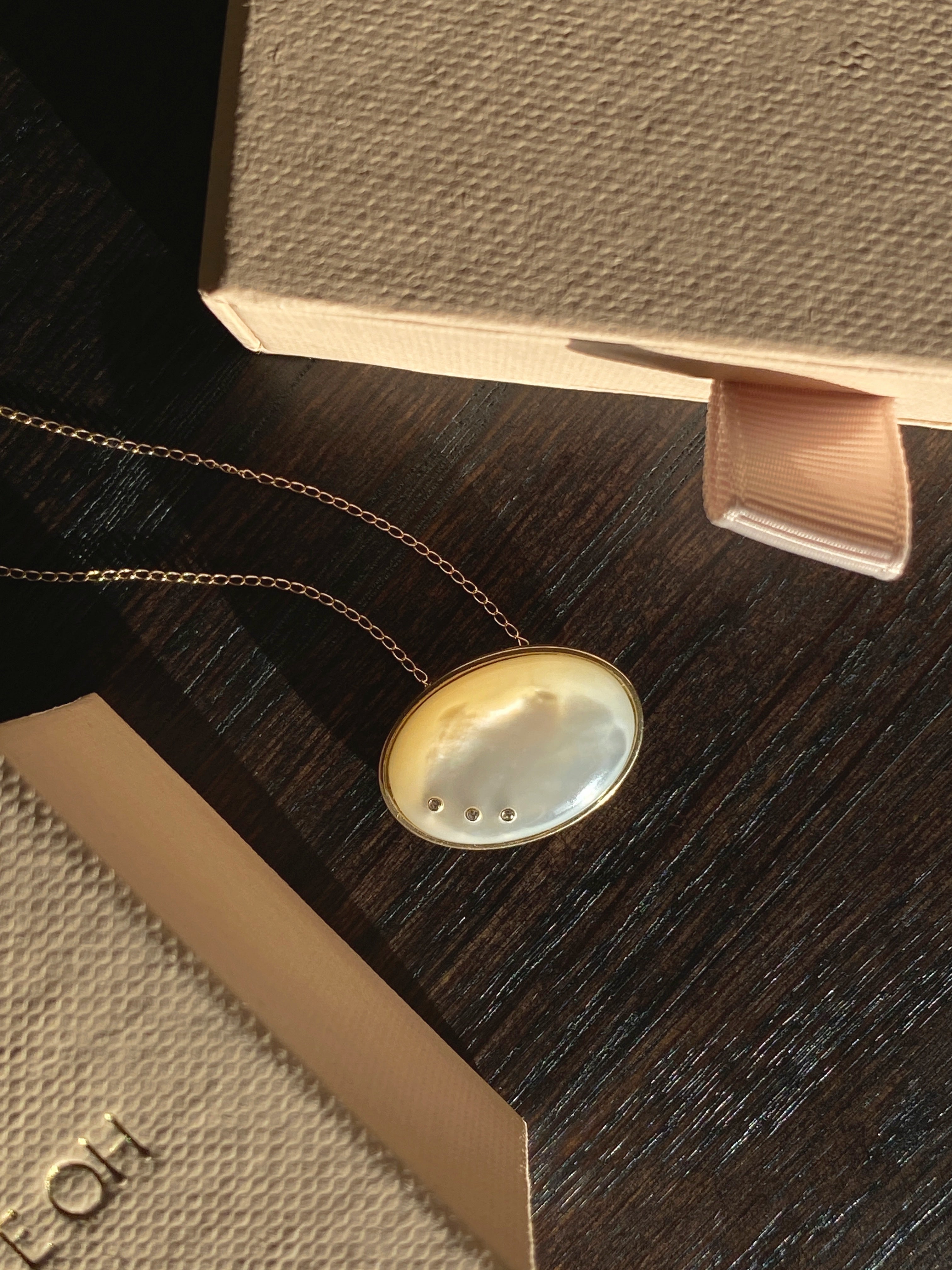
Copper Content
Whether your piece is 9k / 14k / 18k gold, the metal is an alloy made up of pure gold that has been alloyed with base metals to strengthen and stabilise the material. Pure gold (24k gold) is an extremely soft metal that is not suitable of jewellery to be worn daily. That’s why you will often see that all jewellery being offered in the industry are normally either 9k / 14k / 18k gold. 9k gold alloy is made up of 37.5% pure gold mixed with base metals. 14k gold alloy is made up of 58.5% pure gold and 18k gold alloy is made up of 75% pure gold. This is why there is a difference in price between the different alloys, as the higher the gold purity content in the metal the more expensive it will naturally be.
The base metals used within the alloy will depend on whether the resulting metal is to be yellow, rose, or white gold in colour. As you know, gold is a naturally yellow coloured metal, so in order to create rose gold for example, we need to mix it with copper to give it a more reddish colour which results in a pink-gold colour. To create white gold, the pure gold content is alloyed with other metals which are naturally white in colour, such as palladium / platinum / silver / manganese, in order for the resulting alloy to be white in colour.
Some people are naturally more sensitive or reactive to certain base metals such as copper, which can sometimes show up on the skin as a dark discolouration around the part where the jewellery is worn. This is a natural skin reaction as acids in your sweat combine with copper to make salts which naturally manifest in a dark greenish colour that can transfer to your skin. Do not worry if this happens. In most cases prolonged exposure to the metal will make you more accustomed to contact with the metal and your skin will eventually stop reacting as it becomes used to the metal. To reduce this occurrence you can refrain from wearing your jewellery in very hot climates where you might be sweating a lot. If your skin becomes itchy or exhibits other side effects rather than just showing discolouration, it may indicate a more severe allergic reaction. In such case remove your jewellery immediately and seek advice from a professional.
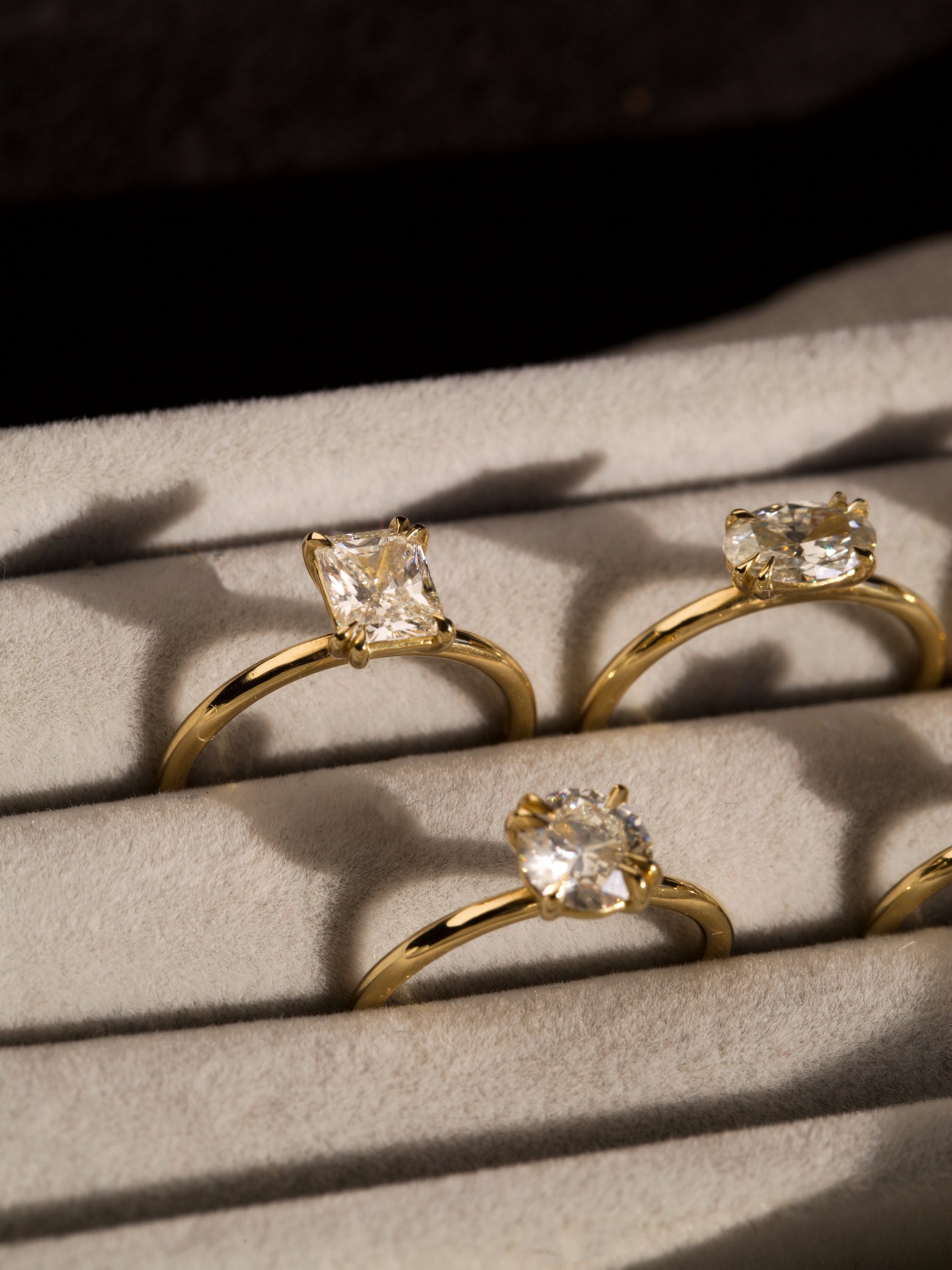
Cleaning
Did you know that gemstones can gather dust, dirt and soap over time? This is one of the main reasons why gems can appear duller after constant wearing. It is not a defect with the stone, it just needs some cleaning!
You can clean your gemstones gently using warm water, gentle soap and a well worn soft toothbrush. Gently brush away the build up around your gemstones to restore their sparkle. Do not use force or risk dislodging the stones from their settings. A polishing cloth or dip may be used to aid the cleaning process. Many brands are available, please make sure you check their product descriptions carefully before using to ensure you use the correct one for the metal and gemstones in your piece. If the build up around your gems is severe, do not attempt to clean it yourself as you may risk tampering with the stone settings. You can pop into any jewellery store to request a sonic cleaning, they usually will do this for free or for a very small charge. You can also look into buying your own mini sonic cleaner, widely available to purchase online these days. We would only recommend using the sonic cleaner on diamond pieces.
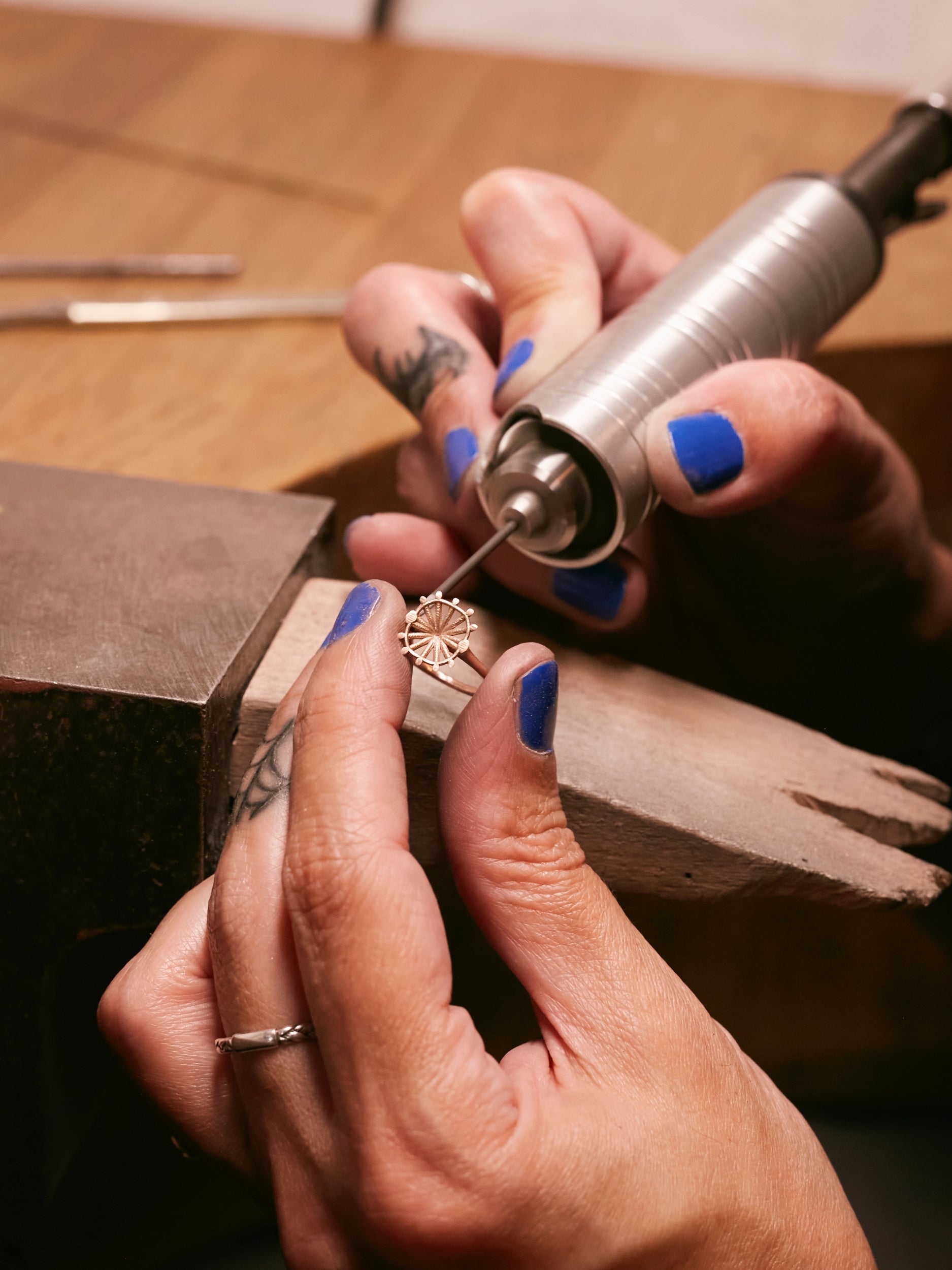
Storage
When you are not wearing your jewellery, it is recommended that you store them in air tight containers with sufficient padding to avoid damage, especially during travels. Avoid putting necklaces and chain bracelets together in one container as tangling will be inevitable. If you are storing many pieces together at once make sure you group them into the same metals. This makes it easier for you to organise and it also minimizes the chance of damage or discolouration from oxidisation during storage.
